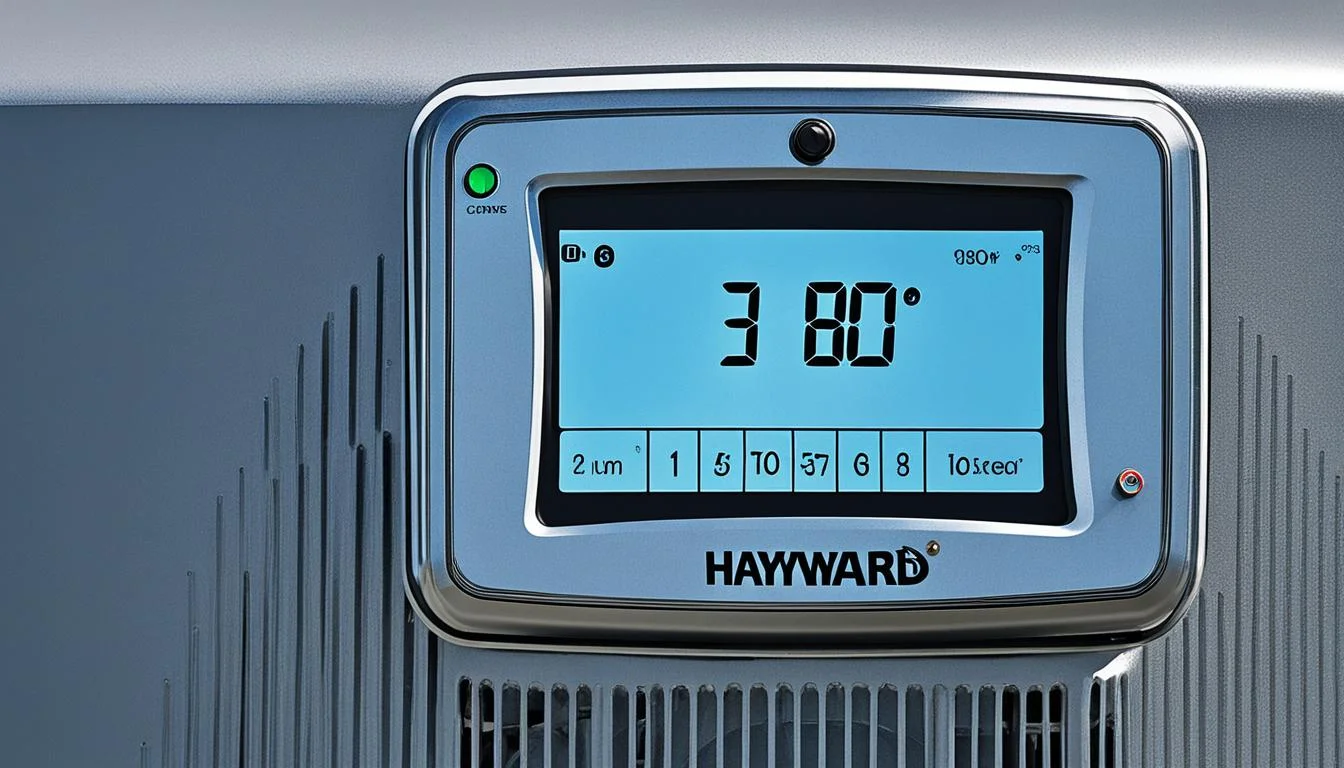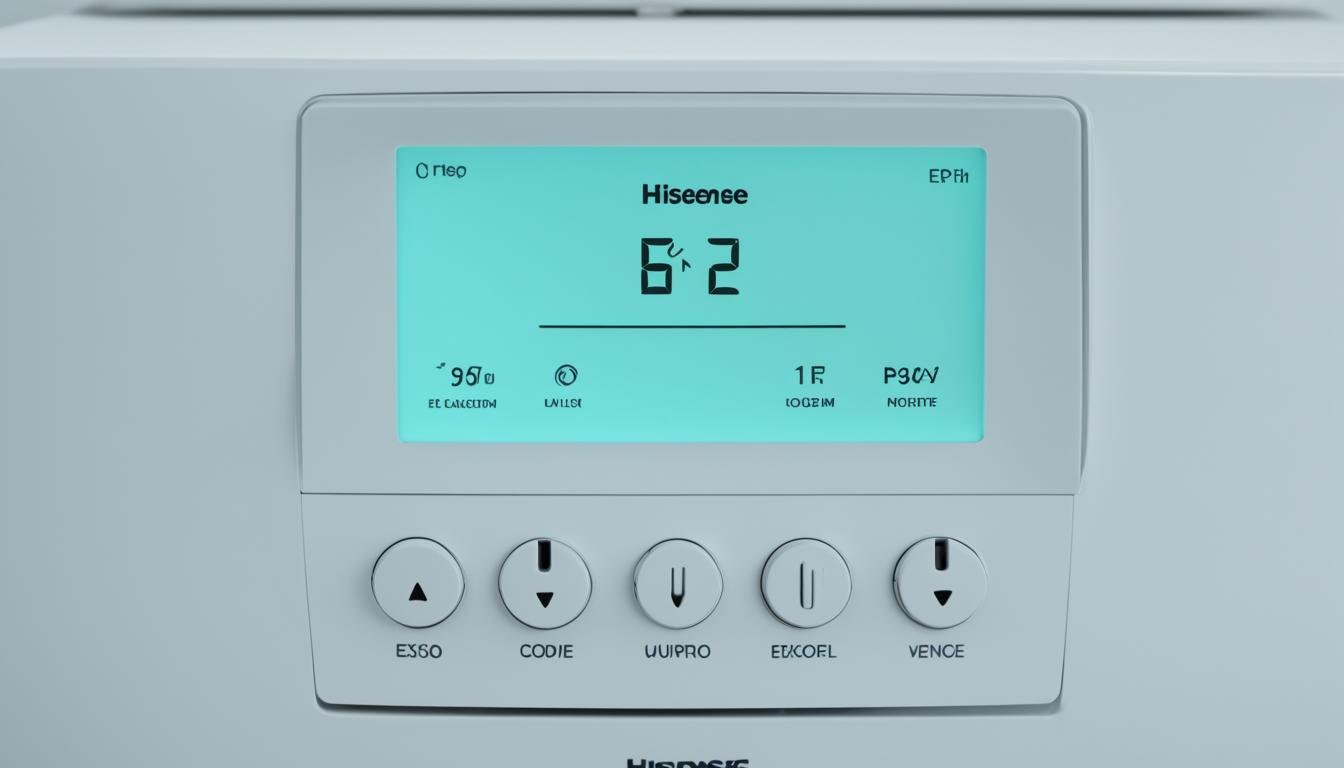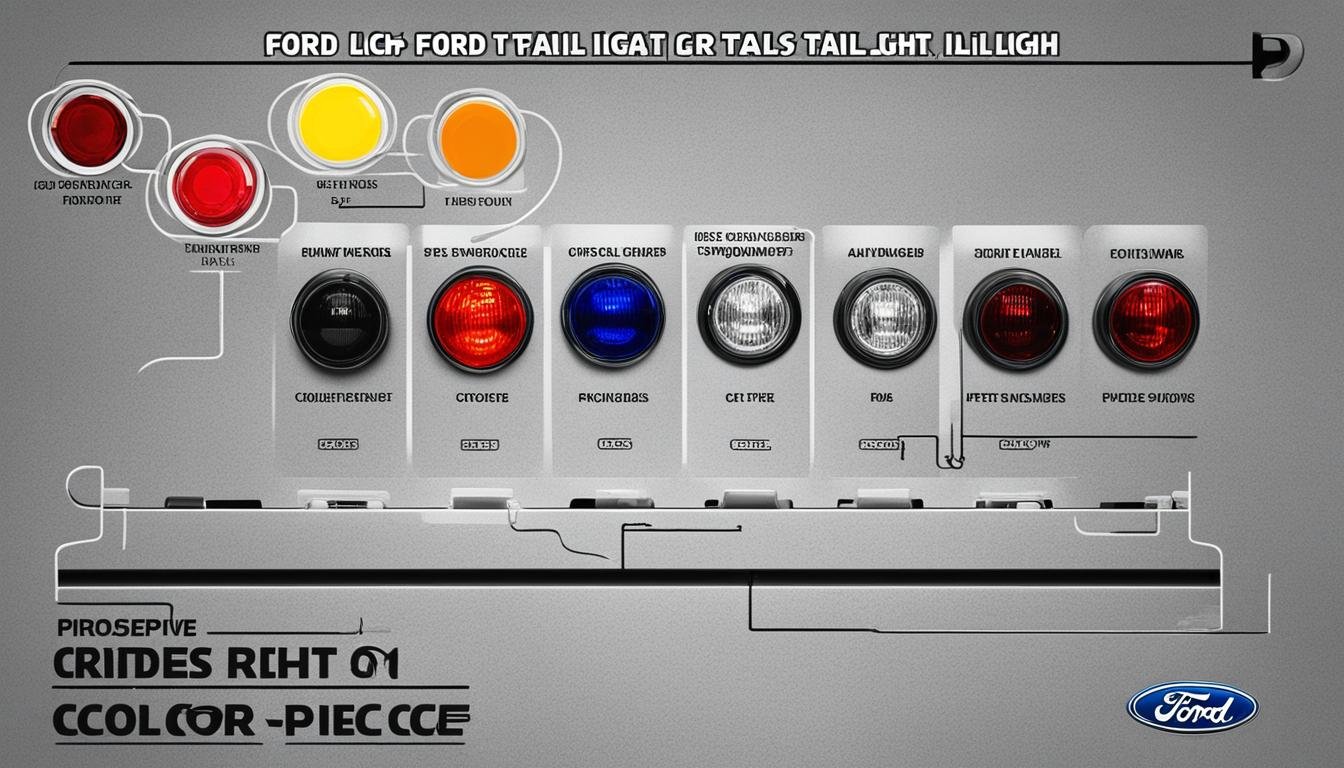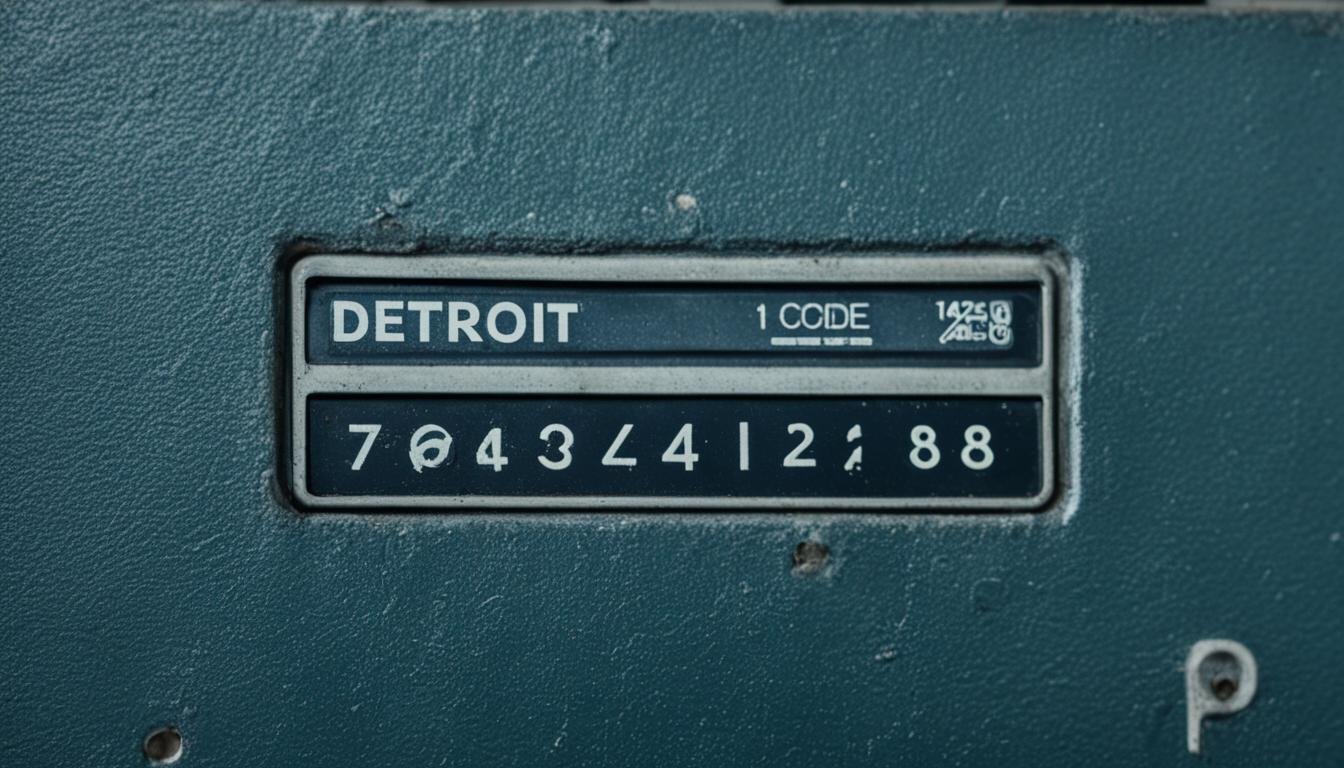Are you facing the dreaded F5 code on your Hayward pool heater? This error can be frustrating and prevent you from enjoying your pool comfortably. But fear not, we have the solution for you.
The F5 code on a Hayward pool heater indicates a temperature sensor failure. But what exactly causes this error? Is it a simple wiring problem or something more complicated?
In this article, we will guide you through the troubleshooting process to fix the F5 code on your Hayward pool heater. We will explore common issues that can cause this error and provide step-by-step instructions on how to address them.
Don’t let the F5 code disrupt your pool time any longer. Let’s dive in and get your Hayward pool heater back up and running!
Key Takeaways:
- The F5 code on a Hayward pool heater indicates a temperature sensor failure.
- Common causes of the F5 code include faulty wiring connections, corroded temperature sensors, defective control boards, or damaged temperature sensors.
- To troubleshoot the F5 code, check the wiring connections, clean the temperature sensor, inspect the control board, and replace any faulty components if necessary.
- Proper maintenance and regular servicing can help extend the lifespan of Hayward pool heaters.
- Hayward pool heaters typically last between 7 to 10 years with proper care.
Common Issues with Hayward Pool Heater F5 Code
When encountering the F5 code on Hayward pool heaters, several common issues may be to blame. These issues can include faulty wiring connections on the circuit board, a dirty or corroded temperature sensor, a defective control board, or a damaged temperature sensor. It is crucial to identify and address these problems to ensure proper functioning of your pool heater.
One possible cause for the F5 code is faulty wiring connections on the circuit board. Over time, the wiring connections can become loose or damaged, resulting in a disruption of signal transmission from the temperature sensor to the control board. To resolve this issue, carefully inspect the wiring connections, ensuring they are secure and free from any damage. If any wiring is found to be faulty, it should be replaced to restore proper functionality.
Another potential cause for the F5 code is a dirty or corroded temperature sensor. This can occur due to prolonged exposure to moisture or harsh pool chemicals. Regular cleaning and maintenance of the temperature sensor can help prevent corrosion and buildup. If the temperature sensor is found to be dirty or corroded, it should be cleaned using a soft brush or cloth. Ensure that the sensor is completely dry before reinstalling it.
A defective control board can also trigger the F5 code on the Hayward pool heater. A faulty control board may not effectively process the signals received from the temperature sensor, leading to an error code. If you suspect a defective control board, it may require replacement by a professional technician. Consider contacting a qualified pool heater service provider to diagnose and resolve control board issues.
Lastly, a damaged temperature sensor can cause the F5 code to appear. External factors such as extreme temperatures, physical impact, or wear and tear can lead to sensor damage. If the temperature sensor is visibly cracked, broken, or damaged in any way, it should be replaced with a new one to ensure accurate temperature readings and proper heater operation.
To reset the F5 code on your Hayward pool heater, try putting the heater in standby mode and then switching it back to its original operating mode. If the F5 code persists despite resetting the heater, it is recommended to follow the troubleshooting steps mentioned in Section 1 to further diagnose and address the issue.
Troubleshooting Guide for Hayward Pool Heater F5 Code
| Possible Cause | Troubleshooting Steps |
|---|---|
| Faulty wiring connections | 1. Inspect wiring connections for damage or looseness. 2. Replace any faulty wiring connections. 3. Secure all connections properly. |
| Dirty or corroded temperature sensor | 1. Remove the temperature sensor from the heater. 2. Clean the sensor using a soft brush or cloth. 3. Ensure the sensor is completely dry before reinstalling it. |
| Defective control board | 1. Contact a qualified technician to diagnose the control board. 2. Replace the control board if necessary. |
| Damage to the temperature sensor | 1. Inspect the temperature sensor for cracks or damage. 2. Replace the temperature sensor with a new one if needed. |
How Long Do Hayward Pool Heaters Last?
Hayward pool heaters are known for their quality and durability. With proper maintenance, these heaters can last between 7 to 10 years on average. However, it’s important to keep in mind that the lifespan of a pool heater can vary depending on several factors such as usage, maintenance practices, and environmental conditions.
Regular maintenance and servicing play a crucial role in extending the lifespan of your Hayward pool heater. By following the manufacturer’s guidelines and scheduling routine inspections, you can ensure that your heater remains in optimal condition for a longer period of time.
One of the key factors in extending the lifespan of a pool heater is addressing any issues or repairs promptly. Ignoring minor problems can lead to more significant damage over time, shortening the overall lifespan of the heater. By taking immediate action and seeking professional assistance when needed, you can prevent further complications and ensure that your Hayward pool heater lasts for many years to come.
To summarize, the average lifespan of Hayward pool heaters is between 7 to 10 years. However, this can be prolonged with proper maintenance, prompt repairs, and regular servicing. By investing time and effort into caring for your pool heater, you can enjoy its efficient performance and longevity, providing you with comfortable swimming experiences for years to come.

Key Points:
- Hayward pool heaters can last between 7 to 10 years on average.
- Regular maintenance and servicing are essential for extending the lifespan of a pool heater.
- Addressing issues and repairs promptly can prevent further complications and lengthen the heater’s lifespan.
Conclusion
The F5 code on a Hayward pool heater can be a frustrating issue, but it can be resolved by following the troubleshooting steps mentioned in Section 1. By addressing common issues such as faulty wiring connections, dirty or corroded temperature sensors, defective control boards, or damaged temperature sensors, you can fix the F5 code and get your pool heater back up and running smoothly.
Regular maintenance and servicing play a crucial role in ensuring the longevity of Hayward pool heaters. With proper care, these heaters can last between 7 to 10 years on average. By performing routine inspections, cleaning, and replacing any faulty components, you can extend the lifespan of your pool heater and avoid recurring F5 code issues.
Remember, it’s essential to diagnose and fix the F5 code promptly. Ignoring the issue or delaying the repairs can lead to further damage and potentially higher repair costs. So, if you encounter the F5 code on your Hayward pool heater, don’t panic. Use the troubleshooting guide provided in this article and take the necessary steps to resolve the issue, ensuring that your pool heater operates efficiently and effectively.
FAQ
How can I fix the F5 code on my Hayward pool heater?
The F5 code on a Hayward pool heater indicates a temperature sensor failure. To fix this issue, start by checking the wiring connection of the temperature sensor and replace any damaged wires. If the problem persists, clean the temperature sensor to remove any corrosion. If the sensor and wiring are functioning properly, inspect the control board for any defects and replace it if necessary. If all else fails, replace the temperature sensor with a new one.
What are the common issues that can cause the F5 code on Hayward pool heaters?
Some common issues that can cause the F5 code on Hayward pool heaters include faulty wiring connections on the circuit board, a dirty or corroded temperature sensor, a defective control board, or a damaged temperature sensor. To reset the F5 code, put the heater in standby mode and then switch it back to the original operating mode. If the F5 code persists, follow the troubleshooting steps mentioned in Section 1 to diagnose and fix the issue.
How long do Hayward pool heaters last?
On average, Hayward pool heaters can last between 7 to 10 years with proper maintenance. However, the lifespan of a pool heater also depends on factors like usage, maintenance, and environmental conditions. Regular maintenance and servicing can help extend the lifespan of a Hayward pool heater.






Leave a Reply